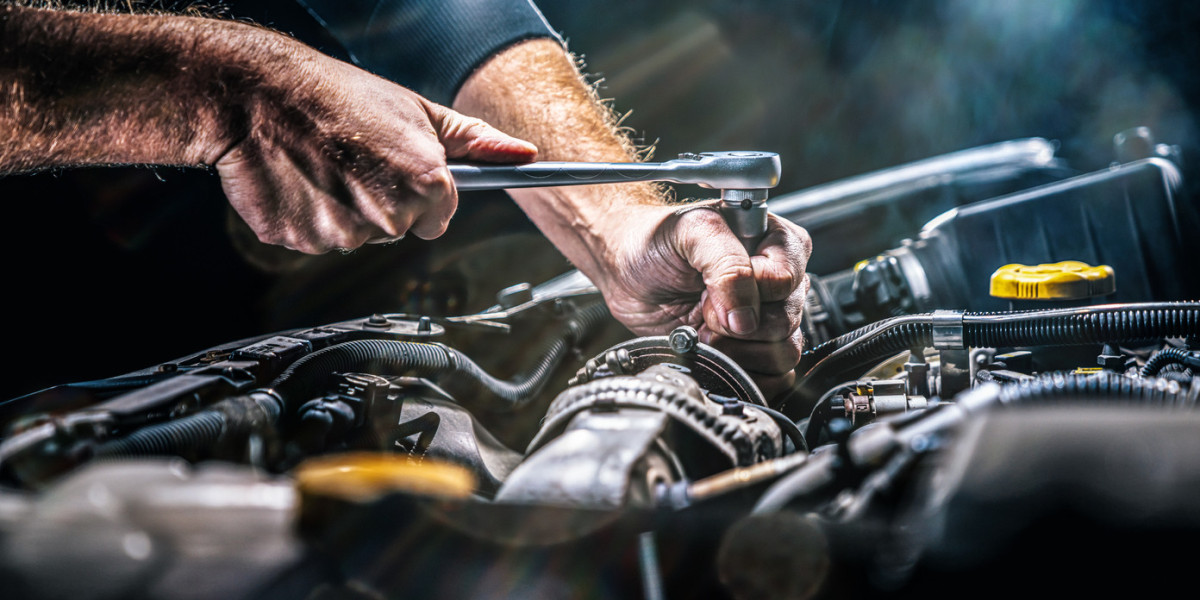Introduction: The Industry Is Shifting — Fast
Auto repair, once dominated by wrenches and grease, is evolving into a high-tech world of software diagnostics, electric drivetrains, AI assistance, and connected vehicles. Mechanics today are no longer just technicians — they’re part software analyst, part engineer, and part electrician.
If you’ve been wondering what lies ahead for the auto repair world, this article dives deep into the emerging trends, technological shifts, and industry conversations that are shaping the garages of tomorrow.
1. Electric Vehicles (EVs): Fewer Parts, More Complexity
EVs like Teslas, Rivians, and the Ford F-150 Lightning are becoming mainstream — and with them, auto repair is undergoing a radical change.
What Mechanics Are Saying:
“It’s not about oil changes anymore. It’s about battery packs, thermal management systems, and software updates.”
Key Impacts:
- EVs have fewer moving parts than internal combustion vehicles
- No oil changes, timing belts, or exhaust repairs
- But they require special training for high-voltage systems
- Shops need insulated tools and EV-certified technicians
Big Takeaway:
Auto repair shops that want to survive must train now for EV service or risk falling behind as the EV market grows.
2. Software is the New Engine
Modern vehicles are rolling computers. From engine control modules (ECUs) to infotainment systems and over-the-air (OTA) updates, software now controls nearly every aspect of your car.
What This Means:
- Diagnosing problems requires advanced diagnostic tools and software access
- OEMs are locking down data, making it harder for independent shops to access repair codes
- Mechanics must understand firmware, CAN bus networks, and digital calibrations
What Mechanics Are Discussing:
“It’s not just nuts and bolts — we’re patching software, decoding error logs, and handling customer tech complaints.”
3. Right to Repair: The Battle for Access
The future of auto repair is also being shaped by a political and legal battle: the fight over “Right to Repair.”
The Issue:
- Car manufacturers are increasingly restricting access to diagnostic tools and proprietary repair data
- Independent mechanics fear being shut out from servicing newer cars
- Legislation in the U.S., Europe, and Canada is pushing for open access to repair data
Why It Matters:
Without action, only dealership service centers may be able to fix tomorrow’s cars — raising costs and reducing consumer choice.
4. AI and Predictive Maintenance
Artificial Intelligence is changing how problems are detected — before they happen.
Examples:
- Fleet management companies use AI to analyze vehicle sensor data and predict failures
- AI-powered diagnostic platforms help mechanics interpret error codes more accurately
- Smart scheduling and parts ordering reduce downtime
What the Future Holds:
“Imagine your car telling the shop what it needs before you even notice a problem.”
This shift means mechanics must learn data interpretation skills and work alongside AI rather than fight it.
5. Augmented Reality (AR) in the Repair Bay
Augmented Reality isn’t just for video games. Shops are beginning to use AR tools that let technicians:
- Overlay repair instructions on a live engine view
- Follow step-by-step visual guides through smart glasses
- Collaborate in real-time with OEM engineers for tricky problems
What Mechanics Say:
“Instead of flipping through manuals, we can look at the engine and see what to do — like Iron Man in a garage.”
6. 3D Printing: On-Demand Parts
When supply chains are strained, 3D printing steps in. Increasingly, repair shops and parts suppliers are using 3D printers to produce small or discontinued parts in-house.
Real-World Uses:
- Fabricating brackets, clips, spacers, and mounts
- Replacing obsolete parts in vintage cars
- Reducing downtime waiting for parts from suppliers
What’s Next:
Expect more CAD-trained technicians in the shop, printing on-demand components from heat-resistant plastics or metals.
7. Mobile Mechanics and Remote Diagnostics
The rise of mobile repair is transforming convenience. With telematics and remote tools, mechanics can now:
- Read error codes remotely
- Update software over the air
- Come to your home or workplace for basic services
Industry Insight:
“The garage is moving to the customer, not the other way around.”
As connectivity improves, expect more subscription-based car care and on-demand maintenance models.
8. Green Auto Repair: Eco-Conscious Practices
As consumers become more eco-conscious, so must auto repair. The industry is responding with:
- Biodegradable oils and coolants
- Recycled parts and core returns
- Energy-efficient shops and solar-powered equipment
- EV battery recycling programs
Why It Matters:
Future-focused shops are going green not just to help the planet, but to align with government incentives and customer expectations.
9. Technician Shortage & Training Challenges
Despite the high-tech transformation, the industry is facing a severe shortage of qualified technicians. Young people are choosing tech or health careers over automotive.
Key Stats:
- The U.S. alone needs 100,000+ new techs over the next decade
- EV repair training is scarce and expensive for shops to implement
What Needs to Happen:
- Better pay and career paths for techs
- More investment in technical education
- Apprenticeship programs tied to EV and hybrid training
10. Vehicle-to-Everything (V2X): The Long-Term Revolution
In the not-so-distant future, vehicles will communicate with each other, road signs, traffic systems, and even mechanics. This is the world of V2X (Vehicle-to-Everything).
How It Will Change Repair:
- Cars may automatically report issues to a shop
- Shops can remotely schedule service based on predictive alerts
- Vehicles could even self-drive to a repair center for routine maintenance
Final Thoughts: The Modern Mechanic is a Hybrid Too
Today’s — and tomorrow’s — mechanic isn’t just turning wrenches. They’re working with:
- Laptops and multimeters
- High-voltage systems
- Diagnostic clouds and encrypted software
- EV battery packs and autonomous systems
In Their Own Words:
“We’re not just mechanics anymore — we’re car doctors, IT pros, electricians, and software consultants rolled into one.”
✅ Takeaways: What to Watch For
Trend | Why It Matters |
EVs and Hybrids | Fewer parts, new risks, high voltage |
Software & Diagnostics | Repairs now involve code, not just tools |
Right to Repair | Fight for independent shop survival |
AI and AR | Enhances speed, accuracy, and training |
Tech Shortage | Shops must evolve to attract new workers |



